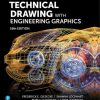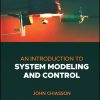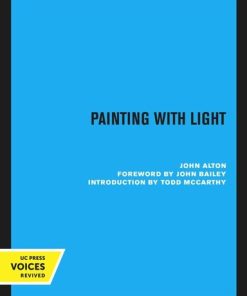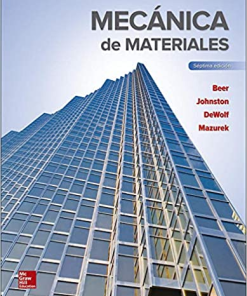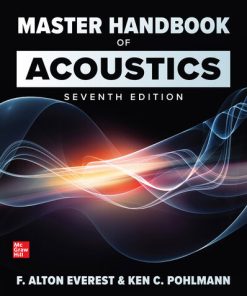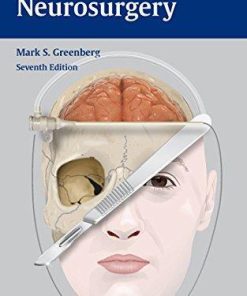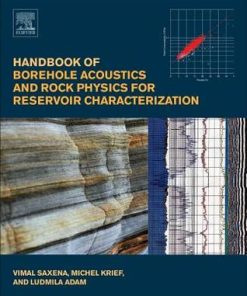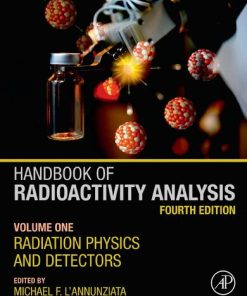(Ebook PDF) Master Handbook of Acoustics 7th Edition by Alton Everest, Ken Pohlmann ISBN 9781260473605 1260473600 full chapters
$50.00 Original price was: $50.00.$25.00Current price is: $25.00.
(Ebook PDF) Master Handbook of Acoustics 7th Edition by F. Alton Everest, Ken C. Pohlmann – Ebook PDF Instant Download/Delivery: 9781260473605, 1260473600
Instant download Full Chapter of Master Handbook of Acoustics 7th Edition after payment
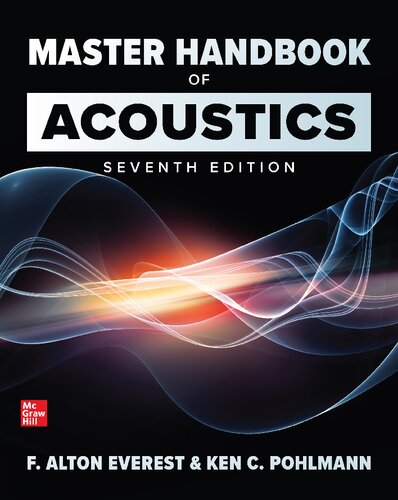
Product details:
ISBN 10: 1260473600
ISBN 13: 9781260473605
Author: F. Alton Everest, Ken C. Pohlmann
Table of contents:
Introduction
1. Fundamentals of Sound
-
Simple Harmonic Motion and the Sine Wave
-
Sound in Media
-
Particle Motion
-
Propagation of Sound
-
Speed of Sound
-
Wavelength and Frequency
-
Complex Waveforms
-
Harmonics
-
Phase
-
Partials
-
Octaves
-
Spectrum
-
Key Points
2. Sound Levels and the Decibel
-
Ratios versus Differences
-
Expressing Numbers
-
Logarithms
-
Decibels
-
Reference Levels
-
Logarithmic and Exponential Forms Compared
-
Acoustic Power
-
Using Decibels
-
Measuring Sound-Pressure Level
-
Sine-Wave Measurements
-
Electrical, Mechanical, and Acoustical Analogs
-
Key Points
3. Sound in the Free Field
-
The Free Field
-
Sound Divergence
-
Sound Intensity in the Free Field
-
Sound Pressure in the Free Field
-
Free-Field Sound Divergence
-
Sound Fields in Enclosed Spaces
-
Hemispherical Field and Propagation
-
Key Points
4. The Perception of Sound
-
Sensitivity of the Ear
-
Ear Anatomy
-
The Outer Ear—Pinna
-
A Demonstration of Directional Cues
-
The Outer Ear—Auditory Canal
-
The Middle Ear
-
The Inner Ear
-
Stereocilia
-
-
Loudness versus Frequency
-
Loudness Control
-
Area of Audibility
-
Loudness versus Sound-Pressure Level
-
Loudness and Bandwidth
-
Loudness of Impulses
-
Audibility of Loudness Changes
-
-
Pitch versus Frequency
-
An Experiment in Pitch
-
The Missing Fundamental
-
-
Timbre versus Spectrum
-
Localization of Sound Sources
-
Binaural Localization
-
Law of the First Wavefront
-
The Franssen Effect
-
The Precedence (Haas) Effect
-
-
Perception of Reflected Sound
-
The Cocktail-Party Effect
-
Aural Nonlinearity
-
Subjective versus Objective Evaluation
-
Occupational and Recreational Hearing Loss
-
-
Key Points
5. Signals, Speech, Music, and Noise
-
Sound Spectrograph
-
Speech
-
Vocal Tract Molding of Speech
-
Formation of Voiced Sounds
-
Formation of Unvoiced Sounds
-
Frequency Response of Speech
-
Directionality of Speech
-
-
Music
-
String Instruments
-
Wind Instruments
-
Nonharmonic Overtones
-
Dynamic Range of Speech and Music
-
Power in Speech and Music
-
Frequency Range of Speech and Music
-
Auditory Area of Speech and Music
-
-
Noise
-
Noise Measurements
-
Random Noise
-
White and Pink Noise
-
Signal Distortion
-
Harmonic Distortion
-
Resonance
-
Audio Filters
-
-
Key Points
6. Reflection
-
Specular Reflections
-
Flutter Echoes
-
Doubling of Pressure at Reflection
-
Reflections from Convex Surfaces
-
Reflections from Concave Surfaces
-
Reflections from Parabolic Surfaces
-
Whispering Galleries
-
Standing Waves
-
Corner Reflectors
-
Mean Free Path
-
Perception of Sound Reflections
-
The Effect of Single Reflections
-
Perception of Spaciousness, Images, and Echoes
-
Effect of Angle of Incidence, Signal Type, and Spectrum on Audibility of Reflection
-
-
Key Points
7. Diffraction
-
Diffraction and Wavefront Propagation
-
Diffraction and Wavelength
-
Diffraction by Obstacles
-
Diffraction by Apertures
-
Diffraction by a Slit
-
Diffraction by a Zone Plate
-
-
Diffraction around the Human Head
-
Diffraction by Loudspeaker Cabinet Edges
-
Diffraction by Various Objects
-
Key Points
8. Refraction
-
The Nature of Refraction
-
Refraction in Solids
-
Refraction in the Atmosphere
-
Refraction in Enclosed Spaces
-
Refraction in the Ocean
-
Key Points
9. Diffusion
-
The Perfectly Diffuse Sound Field
-
Evaluating Diffusion in a Room
-
Steady-State Measurements
-
Decay Beats
-
Exponential Decay
-
-
Spatial Uniformity of Reverberation Time
-
Geometrical Irregularities
-
Absorbent in Patches
-
Concave Surfaces
-
Convex Surfaces: The Polycylindrical Diffuser
-
Plane Surfaces
-
-
Key Points
10. Comb-Filter Effects
-
Comb Filters
-
Superposition of Sound
-
Tonal Signals and Comb Filters
-
Comb Filtering of Music and Speech Signals
-
Comb Filtering of Direct and Reflected Sound
-
Comb Filters and Critical Bands
-
Comb Filters in Multichannel Playback
-
Controlling Comb Filtering
-
Reflections and Spaciousness
-
Comb Filters in Microphone Placement
-
-
Comb-Filter Effects in Practice: Six Examples
-
Estimating Comb-Filter Response
-
Key Points
11. Reverberation
-
Growth of Sound in a Room
-
Decay of Sound in a Room
-
Idealized Growth and Decay of Sound
-
Calculating Reverberation Time
-
Sabine Equation
-
Eyring-Norris Equation
-
Air Absorption
-
-
Measuring Reverberation Time
-
Impulse Sources
-
Steady-State Sources
-
Measuring Equipment
-
Measurement Procedure
-
-
Reverberation and Normal Modes
-
Analysis of Decay Traces
-
Mode Decay Variations
-
Frequency Effect
-
Reverberation Characteristic
-
Reverberation Time Variation with Position
-
-
Decay Rate and the Reverberant Field
-
Acoustically Coupled Spaces
-
Electroacoustically Coupled Spaces
-
Eliminating Decay Fluctuations
-
Influence of Reverberation on Speech
-
Influence of Reverberation on Music
-
Optimum Reverberation Time
-
Bass Rise of Reverberation Time
-
Initial Time-Delay Gap
-
Listening Room Reverberation Time
-
Artificial Reverberation
-
Examples of Reverberation Time Calculations
-
Key Points
12. Absorption
-
Dissipation of Sound Energy
-
Absorption Coefficients
-
Reverberation Chamber Method
-
Impedance Tube Method
-
Tone-Burst Method
-
-
Mounting of Absorbents
-
Mid/High-Frequency Absorption by Porosity
-
Glass-Fiber Low-Density Materials
-
Glass-Fiber High-Density Boards
-
Glass-Fiber Acoustical Tile
-
-
Effect of Thickness of Absorbent
-
Effect of Airspace behind Absorbent
-
Effect of Density of Absorbent
-
Open-Cell Foams
-
Drapes as Sound Absorbers
-
Carpet as Sound Absorber
-
Effect of Carpet Type on Absorbance
-
Effect of Carpet Underlay on Absorbance
-
Carpet Absorption Coefficients
-
-
Sound Absorption by People
-
Sound Absorption in Air
-
Panel (Diaphragmatic) Absorbers
-
Polycylindrical Absorbers
-
Polycylindrical Absorber Construction
-
-
Bass Traps: Low-Frequency Absorption by Resonance
-
Helmholtz (Volume) Resonators
-
Perforated Panel Absorbers
-
Slat Absorbers
-
Placement of Materials
-
Reverberation Time of Helmholtz Resonators
-
Reducing Room Modes with Absorbers
-
Increasing Reverberation Time
-
Absorption Module Design
-
Key Points
13. Modal Resonances
-
Early Experiments and Examples
-
Resonance in a Pipe
-
Indoor Reflections
-
Two-Wall Resonance
-
Frequency Regions
-
Room-Mode Equation
-
Mode Calculations—An Example
-
Experimental Verification
-
Mode Decay
-
Mode Bandwidth
-
Mode Pressure Plots
-
Mode Density
-
Mode Spacing and Timbral Defects
-
Audibility of Timbral Defects
-
Optimal Room Proportions
-
Bonello Criterion
-
Splaying Room Surfaces
-
Nonrectangular Rooms
-
Controlling Problem Modes
-
Simplified Axial-Mode Analysis
-
Key Points
14. Schroeder Diffusers
-
Experimentation
-
Reflection Phase-Grating Diffusers
-
Quadratic Residue Diffusers
-
Primitive Root Diffusers
-
Performance of Diffraction-Grating Diffusers
-
Reflection Phase-Grating Diffuser Applications
-
Flutter Echo
-
Application of Fractals
-
Diffusion in Three Dimensions
-
Diffusing Concrete Blocks
-
Measuring Diffusion Efficiency
-
Comparison of Gratings with Conventional Approaches
-
Key Points
15. Adjustable Acoustics
-
Draperies
-
Portable Absorptive Panels
-
Hinged Panels
-
Louvered Panels
-
Absorptive/Diffusive Adjustable Panels
-
Variable Resonant Devices
-
Rotating Elements
-
Modular Low-Frequency Absorptive Devices
-
Key Points
16. Sound Isolation and Site Selection
-
Propagation through Barriers
-
Approaches to Noise Control
-
Airborne Noise
-
Transmission Loss
-
Effect of Mass and Frequency
-
Coincidence Effect
-
Separation of Mass
-
Porous Materials
-
Sound Transmission Class
-
-
Structureborne Noise
-
Noise Transmitted by Diaphragmatic Action
-
Noise and Room Resonances
-
-
-
Site Selection
-
The Noise Survey
-
Assessment of Environmental Noise
-
Measurement and Testing Standards
-
Recommended Practices
-
-
Noise Measurements and Construction
-
Floor Plan Considerations
-
Designing within a Frame Structure
-
Designing within a Concrete Structure
-
Key Points
17. Sound Isolation: Walls, Floors, and Ceilings
-
Walls as Effective Noise Barriers
-
The Role of Porous Absorbers
-
The Mass Law and Wall Design
-
Separation of Mass in Wall Design
-
Wall Design Summary
-
Improving an Existing Wall
-
Flanking Sound
-
Gypsum Board Walls as Sound Barriers
-
Masonry Walls as Sound Barriers
-
Weak Links
-
Summary of Wall STC Ratings
-
Floating Floors
-
Floating Walls and Ceilings
-
Resilient Hangers
-
Floor/Ceiling Construction
-
Case Study of Footfall Noise
-
Floor/Ceiling Structures and Their IIC Performance
-
Floor/Ceilings in Frame Buildings
-
Floor Attenuation with Concrete Layers
-
Plywood Web versus Solid Wood Joists
-
Key Points
18. Sound Isolation: Windows and Doors
-
Single-Pane Windows
-
Double-Pane Windows
-
Acoustical Holes in Glass: Mass-Air-Mass Resonance
-
Acoustical Holes in Glass: Coincidence Resonance
-
Acoustical Holes in Glass: Standing Waves in the Cavity
-
Glass Mass and Spacing
-
Dissimilar Panes
-
Laminated Glass
-
Plastic Panes
-
Slanting the Glass
-
Third Pane
-
Cavity Absorbent
-
Thermal Glass
-
Example of an Optimized Double-Pane Window
-
Construction of an Observation Window
-
Proprietary Observation Windows
-
Sound-Isolating Doors
-
Sound Locks
-
Composite Partitions
-
Key Points
19. Noise Control in Ventilating Systems
-
Selection of Noise Criteria
-
Fan Noise
-
Machinery Noise and Vibration
-
Air Velocity
-
Natural Attenuation
-
Duct Lining
-
Plenum Silencers
-
Proprietary Attenuators
-
Reactive Silencers
-
Tuned Silencers
-
Duct Location
-
ASHRAE
-
Active Noise Control
-
Key Points
20. Acoustics of Listening Rooms and Home Theaters
-
Playback Criteria
-
Planning the Playback Room
-
Acoustical Treatment of Playback Rooms
-
Peculiarities of Small-Room Acoustics
-
Room Size and Proportion
-
Reverberation Time
-
Low-Frequency Considerations
-
Modal Anomalies
-
Control of Modal Resonances
-
Bass Traps for Playback Rooms
-
Mid/High-Frequency Considerations
-
Identification and Treatment of Reflection Points
-
Lateral Reflections and Control of Spaciousness
-
Loudspeaker Placement
-
Listening Room Plan
-
Home-Theater Plan
-
Controlling Early Reflections
-
Other Treatment Details
-
Key Points
21. Acoustics of Home Studios
-
Home Acoustics: Modes
-
Home Acoustics: Reverberation
-
Home Acoustics: Noise Control
-
Home Studio Budget
-
Home Studio Treatment
-
Home Studio Plan
-
Recording in the Home Studio
-
Garage Studio
-
Key Points
22. Acoustics of Small Recording Studios
-
Ambient Noise Requirements
-
Acoustical Characteristics of Small Studios
-
Direct and Indirect Sound
-
Role of Room Treatment
-
Room Modes and Room Volume
-
Mode Analysis for Different Room Sizes
-
Reverberation Time
-
Reverberation in Small Rooms
-
Optimal Reverberation Time
-
Diffusion
-
Noise
-
Small Studio Design Example
-
Absorption Design Goal
-
Proposed Room Treatment
-
Key Points
23. Acoustics of Large Recording Studios
-
Design Criteria of a Large Studio
-
Floor Plan
-
Wall Sections
-
Section D-D
-
Section E-E
-
Sections F-F and G-G
-
-
Studio Treatment
-
Drum Booth
-
Vocal Booth
-
Sound-Lock Corridor
-
-
Reverberation Time
-
Key Points
24. Acoustics of Control Rooms
-
Initial Time-Delay Gap
-
Live End–Dead End
-
Specular Reflections versus Diffusion
-
Low-Frequency Resonances in Control Rooms
-
Initial Time-Delay Gaps in Practice
-
Loudspeaker Placement, Reflection Paths, and Near-Field Monitoring
-
The Reflection-Free-Zone Control Room
-
Control-Room Frequency Range
-
Outer Shell and Inner Shell of the Control Room
-
Design Criteria of a Control Room
-
Design Example 1: Control Room with Rectangular Walls
-
Design Example 2: Double-Shell Control Room with Splayed Walls
-
Design Example 3: Single-Shell Control Room with Splayed Walls
-
-
Key Points
25. Acoustics of Isolation Booths
-
Applications
-
Design Criteria
-
Isolation Requirements
-
The Small-Room Problem
-
Design Example 1: Traditional Isolation Booth
-
Axial Modes
-
Reverberation Time
-
-
Design Example 2: Isolation Booth with Cylindrical Traps
-
Acoustical Measurements
-
Reverberation Time
-
-
Design Example 3: Isolation Booth with Diffusers
-
Reverberation Time
-
-
Evaluation and Comparison
-
Live End–Dead End Isolation Booth
-
Key Points
26. Acoustics of Audiovisual Postproduction Rooms
-
Design Criteria
-
Design Example 1: Small Postproduction Room
-
Appraisal of Room Resonances
-
Proposed Treatment
-
-
Design Example 2: Large Postproduction Room
-
Appraisal of Room Resonances
-
Monitor Loudspeakers and Early Sound
-
Late Sound
-
Proposed Treatment
-
-
Workbench
-
Mixing Engineer’s Workstation
-
Video Display and Lighting
-
-
Key Points
27. Acoustics of Teleconference Rooms
-
Design Criteria
-
Shape and Size of the Room
-
Floor Plan
People also search:
master handbook of acoustics 7th edition pdf
master handbook of acoustics 7th edition pdf free download
master handbook of acoustics seventh edition 7th edition
master handbook of acoustics seventh edition pdf
master handbook of acoustics seventh edition
You may also like…
Social Science
Engineering
Forensic Science
Medicine - Veterinary Medicine
Pathologic Basis of Veterinary Disease 7th Edition James F. Zachary
Uncategorized
Engineering
Handbook of Borehole Acoustics and Rock Physics for Reservoir Characterization 1st edition
Uncategorized
Keats and Shelley Winds of Light 1st edition by Kelvin Everest 0192666142 9780192666147


